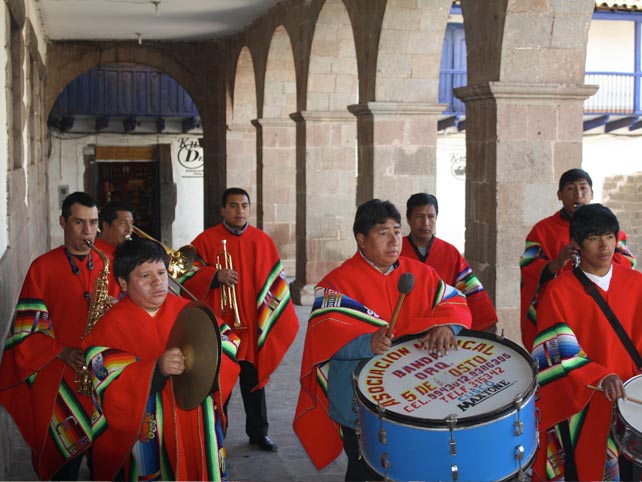
Ancient innovation
We walked for an hour or so through its narrow streets, many of which have small canals beside them dating to the 1400s. The canals offered fresh water coming out of the mountains; for that time, they proved a sophisticated means of providing sanitation to the village.
The train ride from there to Machu Picchu was about an hour and a half, and ran along the Urabamba River valley through farmland, mountain passes and even rain forests. As we left Ollantaytambo, Jorge pointed out huge blocks of stone sitting in a meadow.
“Those are Incan blocks they never got up the mountain because the Spaniards came.”
We could view parts of the Inca Trail on the other side of the river, where backpackers hike into Machu Picchu. For us, it was about a 20-minute ride from town up to the sentinel’s welcome center.
In the pantheon of worldwide travel sites, Machu Picchu holds its own with the Egyptian pyramids, the Taj Mahal and any others you might name. It is transcendent. It is ironic that the Incans granted holiness to the number 3 because Machu Picchu claims a triumvirate of characteristics that distinguish it: mystery — it existed for centuries without the outside world’s knowledge; grandeur — from its walls visitors gaze across miles of Andean peaks and valleys in all directions; and wholeness — the Spanish never found it and thus never defaced it.
Machu Picchu dates to the 15th century, (but it was in the summer of 1911 that American historian Hiram Bingham discovered it). When the Spanish conquered Peru, construction of Machu Picchu was discontinued, but there is no evidence that the invaders ever found this remote mountain city.
Jorge was meticulous in his approach to the architecture there. He pointed out how stones were laid, whether with mortar or without, in such a way as to fall into one another in case of an earthquake or tremor. Because of this method of construction, many structures and walls remain intact today.
It is generally agreed that Machu Picchu was a sacred place, given its location in the Urabamba Valley and the position of some of its structures in relation to the sun.
“The Incan culture gave spiritual significance to the number three,” said Gorge, as we viewed one structure. “They used three animals — the condor, the puma and the snake — to represent the three physical realms of their world: the sky, Mother Earth and the underground.”
The drive back from Urabamba to Cusco for our work project the third day was great. We took a van up the mountain and out of the Sacred Valley into a rolling countryside that was mostly crops. We passed old pickup trucks hauling wagons of corn up the mountain with kids sitting atop the loads. Green fields contrasted with blue mountains topped in white snow.
Before arriving in Cusco, we stopped in Chinchero, a village where a co-op of traditional Incan weavers is based. The Center for Weavers of Chinchero was established in 1996 to protect the integrity of textiles that have been woven there for 2,000 years. Today, 30 weavers work there, setting their wares on the ground in a courtyard. The authenticity of this work was unmistakable, and I bought a beautiful table runner.
Upon our return to Cusco, we began cleaning up the Mercado Central de San Pedro marketplace in the city center. A boisterous crowd and band welcomed our group to the city. Following remarks by local dignitaries and Beckham, we were joined by dozens of local volunteers in restoring an esteemed city landmark.
Various work teams cleaned and painted park benches, street lights and the walls of the market itself. We worked for several hours and enjoyed an outdoor luncheon that featured a Peruvian specialty: roasted ears of corn with huge, marble-size kernels. Many townspeople came out to enjoy the spirit of the day. At the risk of mixing cultures, I’d say it took on the feel of an Amish barn-raising, although at those, I think they have some skilled labor.
That evening, many of the dignitaries joined us for a celebratory reception and dinner at one of Cusco’s historic gems: the Monasterio Hotel. Built originally in 1595 on the site of an Incan palace, the landmark served as a seminary for Catholic priests before becoming a hotel almost three centuries later.









